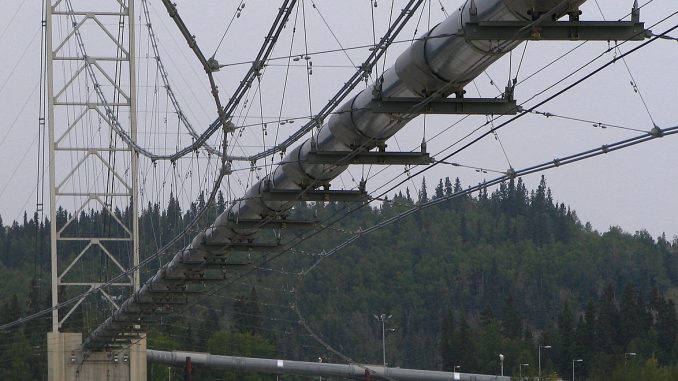
As you might expect from a website called PipeRepair.co.uk, we love pipes… and there is nothing better in a pipeline system than a pipe bridge.
Why is this? Good question and one which there is not really an obvious answer to. Part of it is because – like other types of bridges the world over – there is something spectacular about a man made structure crossing a part of the globe which nature never intended it to.
There is also the element of being able to see a system often hidden from view. A lot of pipelines are buried underground; when they are hoisted into the air on a bridge, then suddenly the system is there for all to see.
Of course, there is much more to a pipe bridge than just looking good. We are going to take a look at the role pipe bridges play in the world, how they are constructed and what happens when these vast structures start leaking or weaken.
What is a pipe bridge?
A pipe bridge is exactly what it says on the tin – a specially constructed bridge that takes a pipeline over the top of an area that would otherwise be impassable. These include roads, rivers, ravines and areas of land where it is too dangerous or unstable to lay pipework.
Pipe bridges are used to carry all kinds of fluid and gases. Drinking water, wastewater, oil and natural gas are all transported by pipe bridges with such structures particularly common in larger countries where some of the world’s longest pipelines traverse vast areas.
Pipe bridges are particularly common in centralised and district heating systems. When such systems are installed, it is easy and cheaper to have pipes running above roads and pavements.
Some pipe bridges include pathways alongside them, either for maintenance or public access. When constructing a pipe bridge, it makes sense to take advantage of a structure crossing an otherwise impassable area by allowing people to use it too – only when safe to do so, of course.
How does a pipe bridge work?
Suspension bridges are the most popular type of pipe bridge as they involve little intrusion into the area below and often appear aesthetically pleasing. The Dnieper River Pipeline Bridge is one such structure.
Built in 1979, it is 720 metres long and traverses the Dnepr River. Over 40 years on from its construction, it is still something of a marvel and testament to human engineering.
Suspension bridges are normal found where a steady flow is running through pipes. Where there is no pressure, a gravity fed pipe bridge is often used instead. As the name suggests, these structures rely on gravity to help fluid pass through the system.
The length of a pipe bridge means that construction usually takes place on-site. Separate pieces of the bridge are manoeuvred into position and then riveted together to create the final structure.
When it comes to pipe bridges carrying water in colder climates, special attention has to be paid to ensuring that the contents of the pipe does not freeze during the winter.
Pipework subjected to such conditions will often be clad in what are known as mechanical pipe bridge crossings. An aluminium covering surrounds the pipe with a heated source inside to keep the water at a constant temperature irrespective of how cold the weather is where the bridge is located.
What happens when a pipe bridge starts leaking or weakens?
Replacing such a vast structure as a pipe bridge when it weakens or starts leaking is an expensive process, involving either constructing a brand new structure alongside the existing bridge or replacing damaged sections with newly fabricated parts.
Companies responsible for the operation of pipework crossing bridges will therefore seek ways to refurbish and reinforce pipe bridges. One of the easiest ways to do this is using a combination of epoxy resins and a composite repair wrap.
Coating a pipe bridge in a product like Liquid Metal Epoxy Coating creates an ultra-smooth metallic layer of protection with high corrosion resistance. This is then overwrapped with a SylWrap HD composite bandage which, when activated with water, sets rock-hard over a structure.
Any holes, cracks or leaks can be plugged using either an epoxy putty or sealed with a silicone repair tape prior to the application of the epoxy coating. Such repairs can extend the lifespan of bridges by up to 20 years.

Leave a Reply